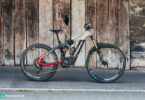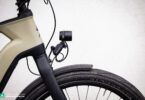Actio and Reactio: Wouldn’t it be awesome if life could be explained with a few simple words and if there were a clearly defined interaction between two variables? Yes, awesome, but paradoxical to say the least. Unfortunately, this simplistic Weltanschauung has seeped into many eMTB-related topics too. Here are 5 misconceptions we must bury once and for all.

Once again, this group test has confirmed what we’ve been telling manufacturers and buyers over and over and what seems to have become our favourite mantra: key data are a problem! While individual parameters like torque, battery capacity, suspension travel and weight might be great brochure material, a good eMTB is far more than just the sum of its parts. Just like a car, an eMTB is a complex machine, a delicate macrosystem that can’t be reduced to a few parameters like horsepower or acceleration – at least if you want to ride it properly. We strongly believe that the key to a happy rider/bike relationship isn’t just having an excellent bike, but one that suits the character of its rider!
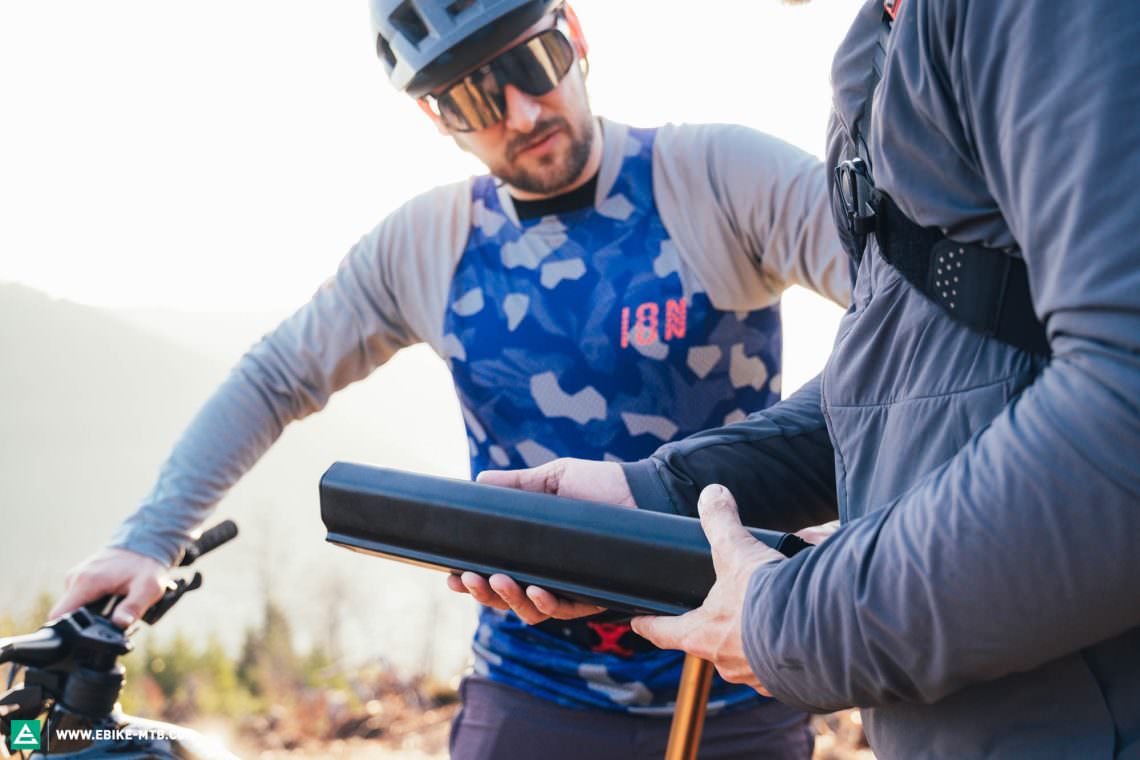
The battery capacity and range of an eMTB
While the average battery capacity of eMTBs is growing fast, this doesn’t necessarily make eMTBs better – in some cases, it even makes them worse. Bigger batteries are heavier and require more installation space, posing new challenges for developers and calling for compromises that aren’t always evident right at first glance. In our reader survey with over 16,000 participants, 77% of the respondents said that the range of their eMTB is mostly or always sufficient – and that was at a time when 630 Wh was considered the standard. In our group test, the average capacity is already 730 Wh. In our article on range anxiety, in this issue, we’re explaining what factors influence the range of an eMTB. SPOILER ALERT! It’s not the Wh value printed on the battery housing or brochures that matters, but rather your needs and riding style. Although largely unjustified, range anxiety is still a real thing, encouraging manufacturers to engage in a savage battery arms race to provide customers with an instant relief, rather than educating them about the subject. And while a big battery might be the right choice for a small intersection of eMTB types, for example heavy riders who cover long distances on fire roads with plenty of elevation gain using mainly Turbo mode, only a small percentage of riders will identify themselves with this niche. That’s why we are big fans of modular battery concepts that allow a little more flexibility or protect the battery in other ways. Such concepts are represented in this group test.
While at 540 Wh, the Orbea Rise has the smallest battery in the entire test field, this can be complemented by an optional 252 W range extender, which costs € 500 and boosts the capacity to almost 800 Wh. However, the throttled Shimano EP8-RS motor of the Orbea ensures that even the 540 Wh battery won’t run out of juice on epic backcountry expeditions. At 750 Wh, the GIANT Trance X E+1 comes standard with a big battery that is likely to be sufficient for most applications. However, GIANT, too, allow you to expand the battery capacity of the Trance X using their 250 W EnergyPak Plus range extender, which also retails for € 500 and boosts the total capacity to a whopping 1,000 Wh – which only few of us will exhaust on one ride. With the Spectral:ON, Canyon rely on a flexible battery concept, allowing you to freely switch between a 720 Wh and 900 Wh battery. Canyon’s engineers dug deep into their bag of tricks to prevent the batteries from affecting the handling of the bike. As a result, the Spectral:ON is extremely light-footed, even with the bigger 900 Wh battery. The German manufacturer has done an excellent job in terms of riding dynamics, even if the battery integration called for some compromises. But that’s not always the case, because 200 Wh adds just under 1 kg on average but makes a huge difference with some bikes. In order to understand which battery concept suits you best, you’ll have to ask yourself how and where you want to ride your bike: range extenders, removable batteries and a conservative riding style will all help you get to your destination. A huge battery that you rarely use up on one ride, is above all additional deadweight you’re always carrying around.
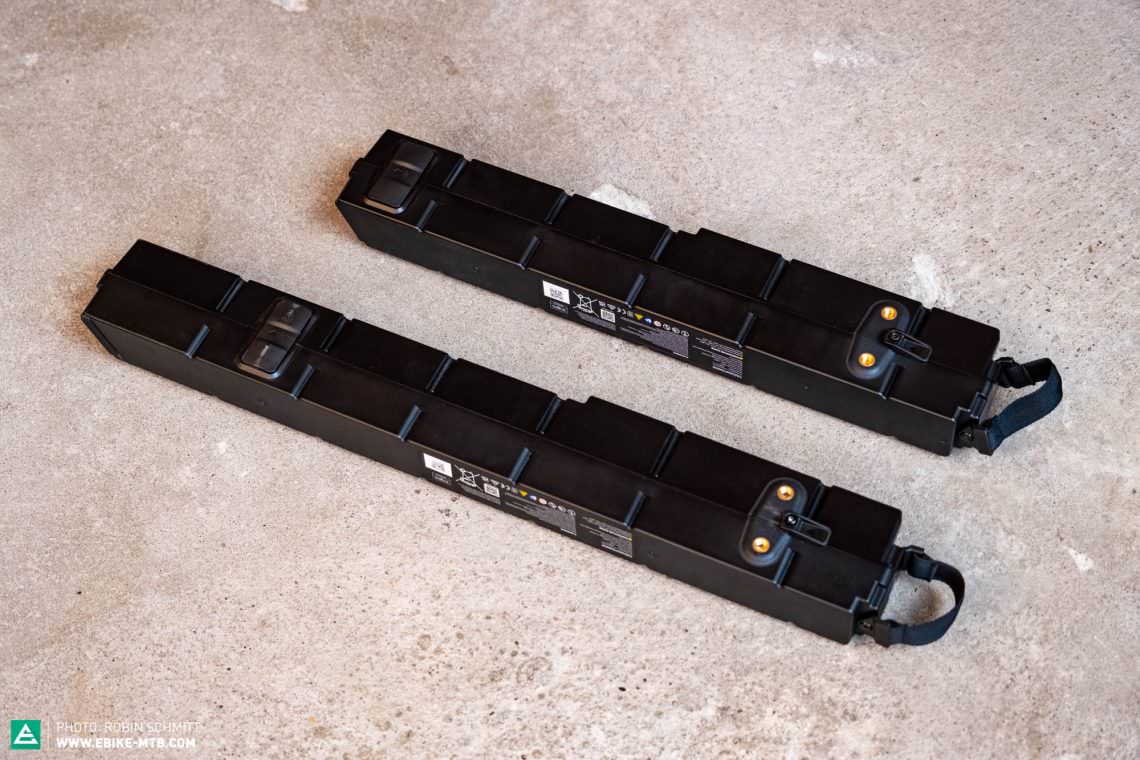
Scales don’t lie, or do they? The weight of eMTBs
Total system weight is still one of the top 3 topics in every respectable bike spec pub debate. Just for the record, the 11 eMTBs in this comparison test weigh an average of 24.60 kg – we couldn’t care less. On the one hand, that’s because this price range leaves very little room for weight optimization, and on the other, because saving weight in the wrong place could have a negative effect on handling – as counterintuitive as this might sound at first. In this group test, many heavy eMTBs ride better than their lightweight counterparts, either because the weight is distributed more evenly or the contact point with the ground (the tires!) and other safety and traction-relevant components are better suited for the intended use. As a result, it’s not the weight that counts, but the way it’s positioned!
While the heaviest eMTB in this test, the SCOTT Patron eRide 920, weighs almost 27 kg, it makes it easier to pull manuals than lighter contestants like the GIANT or Rossignol. At 21.50 kg, the BULLS SONIC EVO AM-SL1 is one of the featherweights in this test field, but quickly reaches its limits in almost every off-road scenario, which is mainly due to the shallow-profiled and thinly-cased tires and basic suspension fork. A heavier tire that only adds 200 g more to the bike can improve its riding performance significantly, even with a slightly sportier riding style or heavy riders, because the robust casing allows you to run lower air pressures, thus ensuring better traction. Moreover, when choosing your new bike, never trust the manufacturer’s weight specifications and also remember that most of the weight is still on the saddle ;-).

More HP for eMTBs – How important is motor power on an eMTB?
The Shimano, Bosch and GIANT motors in this test all deliver 85 Nm peak torque – only Orbea tweaked the software of the Shimano EP8-RS on their Rise H15 to reduce the maximum torque to 60 Nm. While on paper the 85 Nm torque across the board might seem identical, it’s delivered differently, even with ebikes that share the same drive. For instance, the BULLS SONIC EVO AM-SL1 accelerates more willingly from a standstill than the FOCUS JAM² 7.9, which relies on the exact same motor. This is due to the lower rotating mass of the lightweight tires and more efficient suspension. However, relaxed tourers won’t even need a more powerful motor which, in the worst-case scenario, will only cause the battery to drain faster. On the other hand, riders who love to ride their eMTBs on challenging climbs, will gladly welcome a little extra oomph. For this reason alone, it’s crucial to know exactly what you want to do with your eMTB in the future, as there may be different systems that suit your intended use. Fixating on a single motor manufacturer a priori or choosing your bike based on the highest torque values will rarely lead you into the right direction – unless you want to impress a clueless eMTB novice in one of those tedious bike spec pub debates!
Far more relevant to the riding performance is how well the motor is integrated into the bike and how well it harmonises with the overall concept – and this can vary hugely from eMTB to eMTB. However, motor integration isn’t just about good design, but also about functional aspects such as the position of the motor components, centre of gravity, ground clearance and reliability. Only this way will you be able to enjoy your ride without technical glitches or other malfunctions. On the MERIDA, Rossignol and Canyon, the motor covers got damaged after some hard casing while some battery plugs, like the one of the Canyon Spectral:ON, weren’t connected properly, causing the motor to shut off unexpectedly. Luckily, we were able to fix these problems, either by ourselves or with the support of the manufacturers, and resume the testing sessions, but your average eMTBer doesn’t get the same support as the test crew of a specialist magazine. For people who rely on their eMTB in daily life, fast and good-quality service support is crucial. With motor problems, manufacturers will be happy to refer you to an authorised local dealer who will service your Bosch, Shimano and co. motor. If your trusted local eMTB shop only supports motor brand X, it might not be a good idea to buy a bike with a motor brand Y. If you ride a lot, regular servicing is just as important as the functionality of the drive system itself!
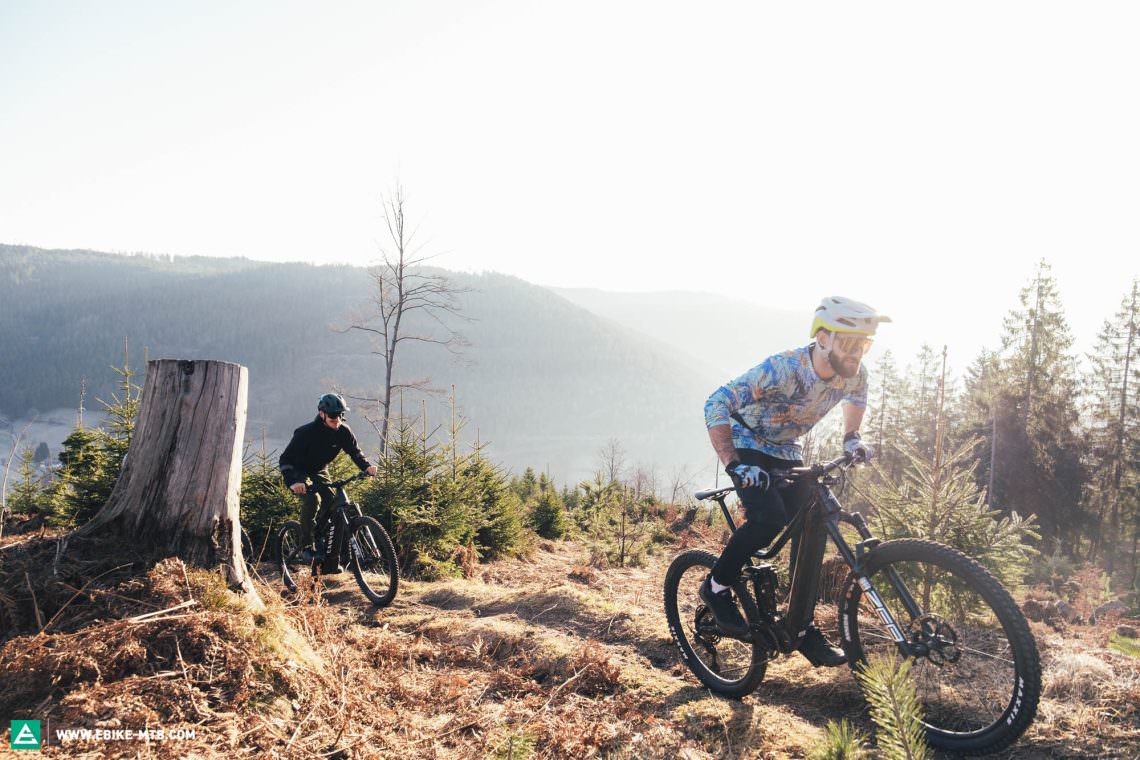
More than just the hardware – Understanding the eMTB as a digitally networked system
In a best-case scenario, bike and motor manufacturers won’t limit themselves to integrating an existing motor into a new eMTB as neatly as possible, but rather develop an entire new digital ecosystem around the ebike. Although this can have a huge impact on the overall riding experience, it’s an aspect that is often neglected in the final purchasing decision. For example, have you noticed that most manufacturers place the motor remote on the left side of the handlebars? On our bikes with Shimano and GIANT motors, the button functions can be freely assigned from the respective smartphone app, allowing you to mirror the standard remote and move it to the other end of the handlebars. While all motors in this test can be configured via smartphone, some manufacturers do this better than others. For example, the GIANT app only allows you to adapt each support mode with three predefined settings while Shimano let you fine-tune each support mode via several parameters and save your settings in two separate profiles. With a couple of clicks, you’ll be able to convert your eMTB from a powerful torque beast for sporty trail sessions into a gentle everyday companion that gently cuts off the support at 15 km/h, so the kids in the trailer don’t wake up. Software-based tuning of the dynamic support modes also makes a huge difference in the motor characteristics and thus the ride-feeling. Although 10 out of the 11 motors in this test have the same nominal output torque, the dynamic-progressive eMTB mode of the Bosch bikes in this test provides the best situation-specific power delivery in almost all scenarios, while GIANT’s automatic mode still seems to be in its software infancy and is tuned far too gingerly.

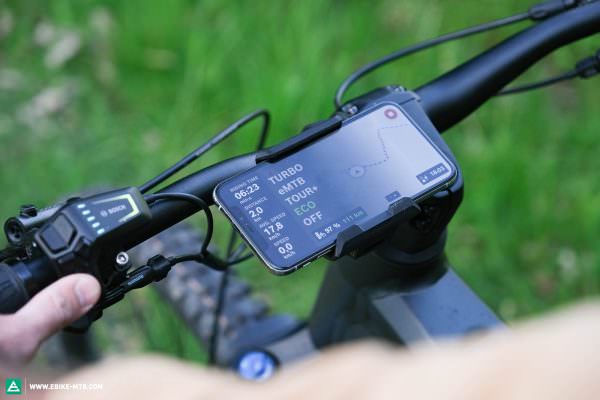
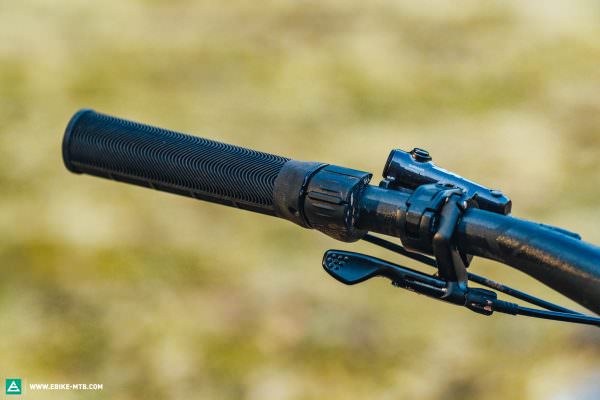
With the launch of the Smart System, Bosch have shifted their focus to a digital ecosystem, following in the footsteps of Specialized’s Mission Control App and MasterMind Turbo Control Unit (TCU). While the Smart System motor is technically almost identical to the Bosch Performance Line CX, its peripheral components were conceived as a fully networked system, which can be constantly refreshed via simple software updates. That’s exactly what happened during this test, when Bosch activated the Ride Screen and eBike Lock features on their companion app. The latter converts your smartphone into a digital key while Ride Screen transforms it into a rudimentary handlebar remote control – which comes in handy when the phone sits on the bars in a holder – and if you haven’t yet, you’ll finally realise that the Bosch motor also has a loudspeaker for acoustic signals, e.g. for locking or unlocking!
These features provide real added value and prove that there’s far more to the riding experience than the hardware and data such as torque or battery capacity … as if that means anything in the real world. Rather, the ebike must be understood as a dynamic system that’s capable of developing over its lifetime. This also means that current gaps in the system can be filled in future without requiring major hardware updates. One example: while all manufacturers in this test offer a navigation function with their apps, they aren’t (yet) able to reproduce the route instructions on the displays – in any form! As a result, touring riders who are used to the excellent navigation feature of the Bosch Nyon display without an additional smartphone, will walk away empty-handed from this test. However, the Bosch bikes with a big Kiox 300 display in this test would already meet the technical requirements. With the GIANT Trance X E+1, you already have the option of sending your smartphone navigation to the optional RideDash EVO display on the handlebar, which is available for an additional € 150.

King carbon, how useful is the black gold on an eMTB?
As mentioned before, manufacturers tend to deliver their higher-end eMTBs with carbon frames and carbon wheels, simply because that’s what customers expect! Carbon is hugely popular, even though it has its drawbacks. But what about lower price brackets, where carbon isn’t high on the customer’s priority list? Does it still make sense? Carbon frames and components aren’t necessarily better or worse than their alloy counterparts because the quality of a product always depends on several mutually dependent factors. It’s no secret that we’d pick a solid alloy wheelset over lightweight carbon rims every day of the week, as the latter is less likely to get demolished with hard impacts. But carbon isn’t just restricted to high-end eMTBs. The BULLS SONIC EVO AM-SL1, which at € 5,200 is the second cheapest eMTB in this group test, comes with a stylish carbon frame. No less stylish is the frame of the Canyon Spectral:ON CF8, which impressed us with a very modern design. But not all carbon is the same, and this is also true for Canyon. While the new Spectral:ON is only available as a carbon version, the German direct-sales brand also offer their latest eMTB with a lighter high-modulus CFR frame, with prices starting at € 9,000. As you can see, choosing your new eMTB based on the material alone won’t get you far.
If you buy an eMTB based on stereotyped key data like the motor, weight or torque, it’s your own fault. “Stupid buys twice” – the successful business model of some manufacturers gives them no reason to inform customer about the real requirements. Instead, they milk the fat key data cow, dipping new superlatives in innovation glitter and discarding extremely good bikes as obsolete, replacing them with new ones overnight. Unfortunately, this helps neither the riders nor the sustainability of the entire industry.
Did you enjoy this article? If so, we would be stoked if you decide to support us with a monthly contribution. By becoming a supporter of E-MOUNTAINBIKE, you will help secure a sustainable future for high-quality cycling journalism. Click here to learn more.
Words: Rudolf Fischer Photos: Various







